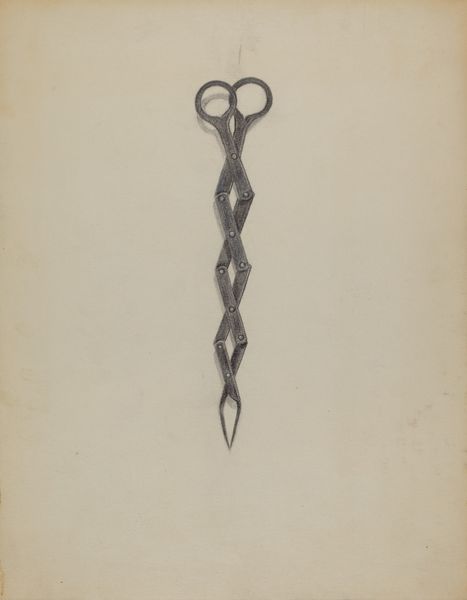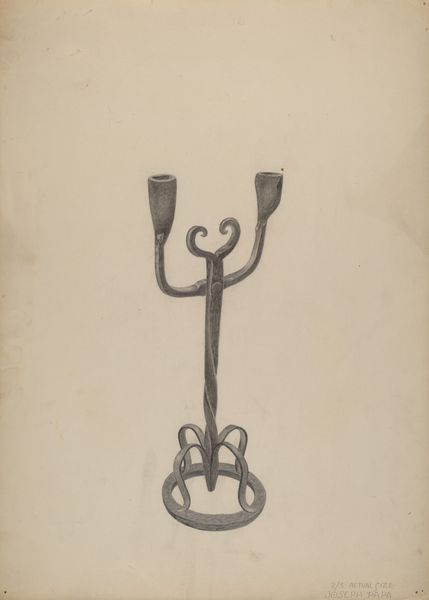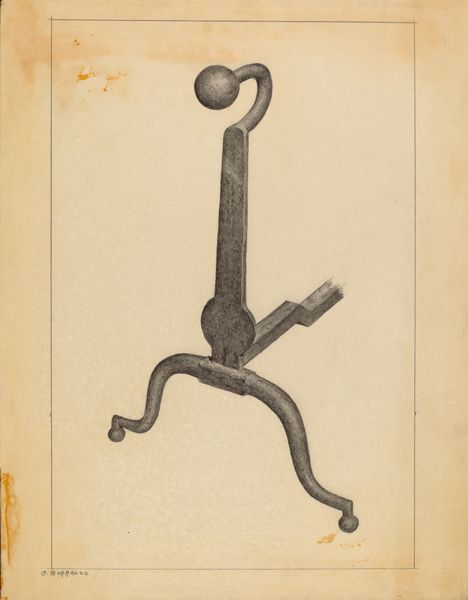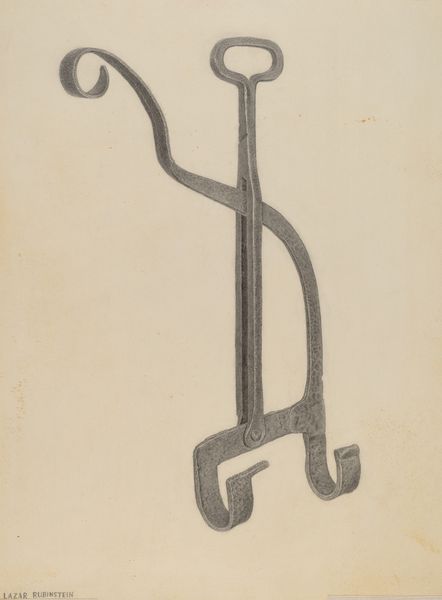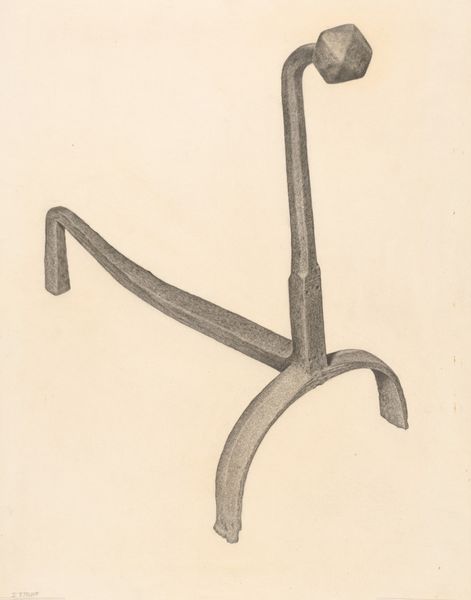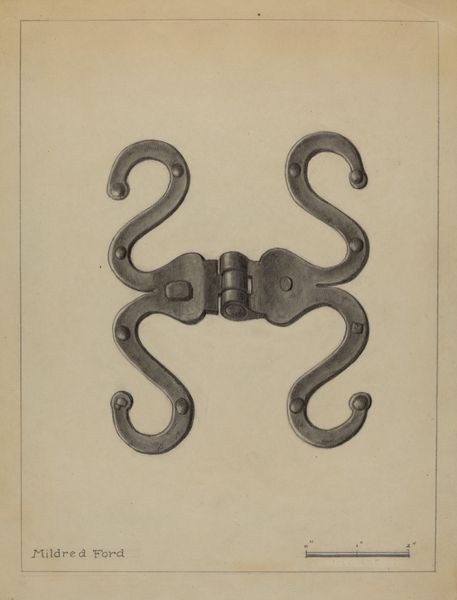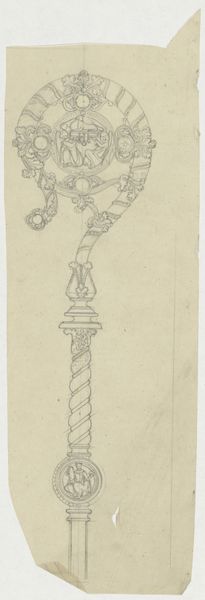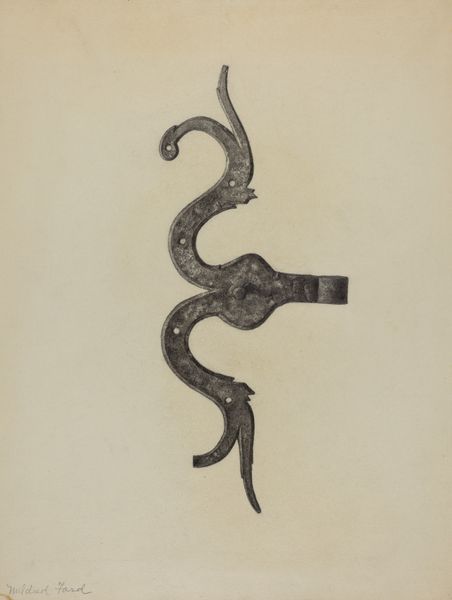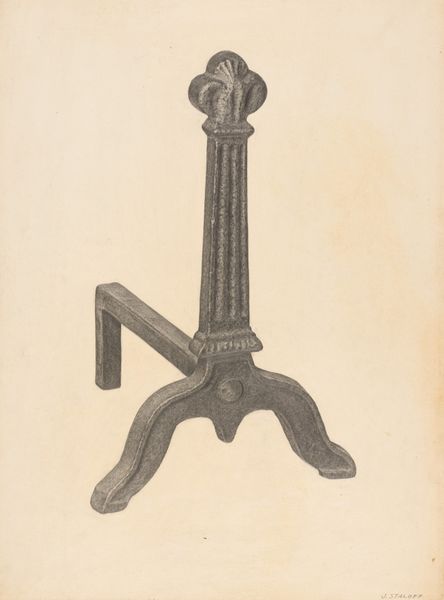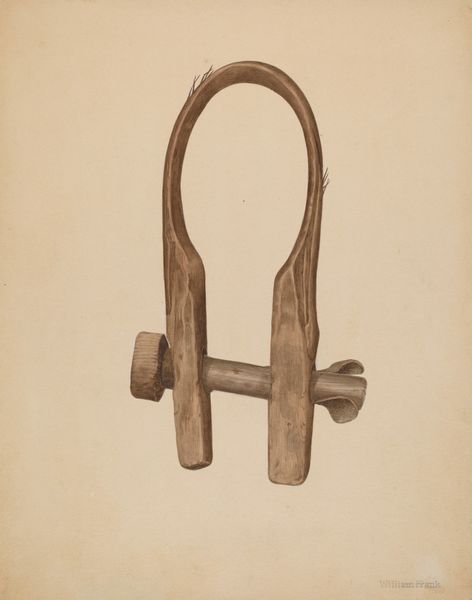
drawing, pencil
#
drawing
#
pencil
#
modernism
#
watercolor
Dimensions: overall: 35.4 x 23.9 cm (13 15/16 x 9 7/16 in.) Original IAD Object: 16" long
Copyright: National Gallery of Art: CC0 1.0
Curator: Welcome. Let's turn our attention to a drawing titled "Tongs" by Samuel Fineman, created around 1937, rendered in pencil. What strikes you most about this image? Editor: It's the geometry, certainly. The way those rhomboid shapes create such an organized structure, contrasting with the clear sense of rust, weight, and age. There's a tactile quality, even in pencil. Curator: Indeed. These tools likely played a crucial role in industries that defined the 1930s. Fineman's documentation preserves a tangible connection to that working-class experience. Consider how projects under the WPA allowed artists to create visual records of such essential artifacts. Editor: It’s an odd flattening, though. The drawing focuses only on a singular perspective. By neglecting texture or variable weighting to indicate curvature, for instance, the piece risks a feeling of mere copying, an illustrative, functional record that, for example, might lack some emotive expressiveness. Curator: That is precisely its strength! Fineman is working within a larger Depression-era aesthetic where the dignity of labor and the precision of industry were venerated, often eclipsing individualistic flourishes in favor of conveying a sense of shared purpose and straightforward functionality. These are tongs; nothing less, nothing more. Editor: Even so, notice the tension arising between the industrial nature of its production and this softness inherent in the almost washy effect, that hazy rendering using graphite; is this not watercolor, given its qualities of near effervescence? The tonal modulation evokes both the hardness and utility that this implement offers. It seems as if he’s intentionally manipulating qualities intrinsic to his materials to achieve a calculated sense of volume. Curator: I see your point, certainly a valid interpretative thread—this artistic rendering celebrates both a historical moment and those often unseen laborers, imbuing dignity into the otherwise mundane objects they held, shaped, and depended on. Editor: Exactly. Through material qualities and compositional arrangement, the humble tongs transform from functional tool to aesthetic symbol. Curator: A compelling dialogue sparked by a seemingly simple subject, beautifully observed. Editor: Absolutely, another reminder that tools such as these connect us profoundly with historical narratives that impact everyday lives.
Comments
No comments
Be the first to comment and join the conversation on the ultimate creative platform.
